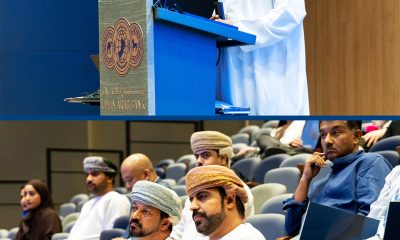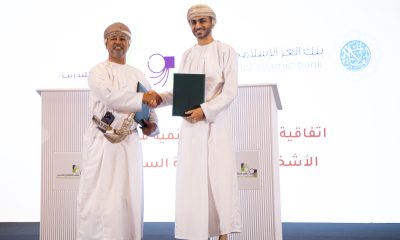Economy
Oman’s 2020 Budget: Highlights

Oman’s government expects to increase spending in 2020 by 2% to OMR13.2 billion, but its fiscal deficit will remain high at 8% of gross domestic product (GDP), according to Oman News Agency.
The government expects a deficit of OMR2.5 billion in 2020, slightly lower than the OMR2.8 billion projected in the 2019 budget. The Sultanate recorded a deficit of 1.9 billion rials in the first 10 months of 2019, according to government data.
Some 80% of the 2020 deficit will be funded through foreign and domestic borrowing, while the remainder will be funded by drawing from reserves.
Revenues are estimated at OMR10.7 billion, assuming an average oil price of $58 per barrel this year – up 6% from last year’s budget projection.
The spending on investment projects, particularly job creation projects that have economic returns, is expected to reach OMR5.3 billion, out of which OMR2.7 billion will be paid by state-owned enterprises (SOEs) for service and industrial projects.
OMR1.3 billion will be spent by various government organisations on infrastructure projects.
In addition, OMR1.3 billion will be allocated for oil and gas production. These projects will eventually help in generating more job opportunities.
Oil revenue has been projected to reach OMR5.5 billion, representing 51 per cent of total revenue as against 54 per cent in 2019, while estimated gas revenue in 2020 Budget increased by 11 per cent compared to budgeted figures of 2019, reaching OMR2.2 billion.
This is attributed to an increase in natural gas volume by 5 per cent, and a rise in local gas sales by 3 per cent, the Ministry said.
The non-hydrocarbon revenue projected to stand at OMR3 billion, up by 13 per cent as compared with 2019 Budget. This increase is due to higher tax revenue by 9 per cent and non-tax revenue by 18 per cent as compared with what has been achieved in 2019.
This comes in line with government’s efforts to diversify the sources of income and enhance non-hydrocarbon revenue.
The budget for the fiscal year 2020 represents the last year of the ninth five-year plan for development (2016-2020), as well as the last year of the Oman 2020 vision. It also paves the way for Oman Vision 2040 and the tenth five-year plan.
-

 Banking & Finance1 week ago
Banking & Finance1 week agoOman Arab Bank Announces Increase of Authorised Capital to RO500mn and Paid‑In Capital Boost of RO50mn
-

 Renewables1 month ago
Renewables1 month agoJindal Renewables and OQ Alternative Energy Sign Joint Development Agreement to Advance Integrated Renewable Power Projects in Oman
-

 Bahrain6 days ago
Bahrain6 days agoSPIEF 2025 focused on global and regional economic processes, market transformation, new tech, investment climate, financial policy and people
-

 Alamaliktistaad Magazines1 month ago
Alamaliktistaad Magazines1 month agoAl-Iktisaad, May 25
-

 OER Magazines1 month ago
OER Magazines1 month agoOER, May 2025
-

 Leaders Speak2 months ago
Leaders Speak2 months agoOERLive SPOTLIGHT: Oman Sustainability Week 2025 and Oman Petroleum & Energy Show
-

 Business2 months ago
Business2 months agoSt. Petersburg International Economic Forum 2025 unveils its Business Programme
-

 Banking & Finance2 months ago
Banking & Finance2 months agoAlizz Islamic Bank Partners with Al Tawasul Institute for Specialised Training Programme to Empower Job Seekers with Hearing Impairments





























